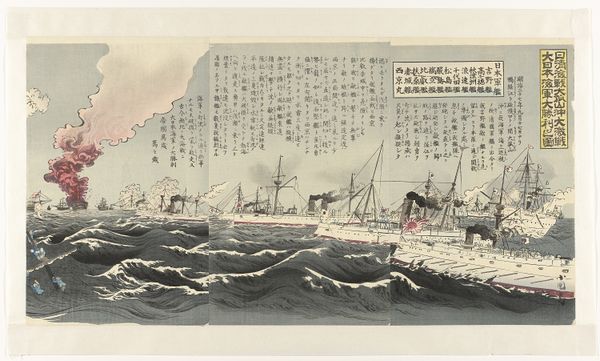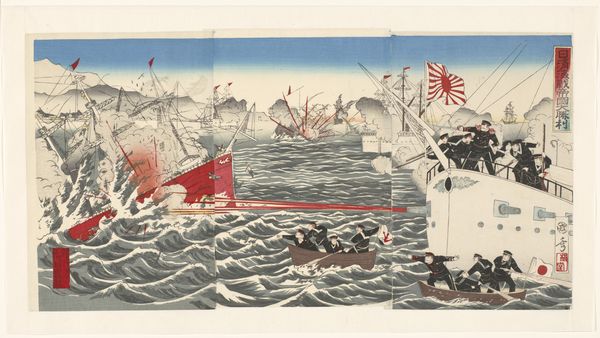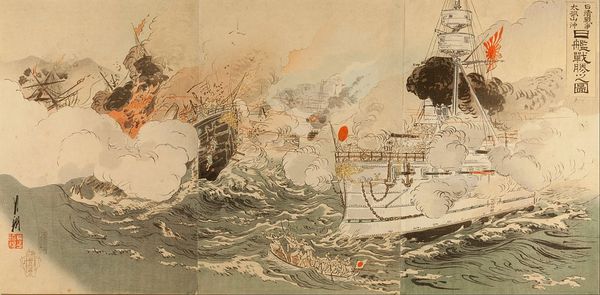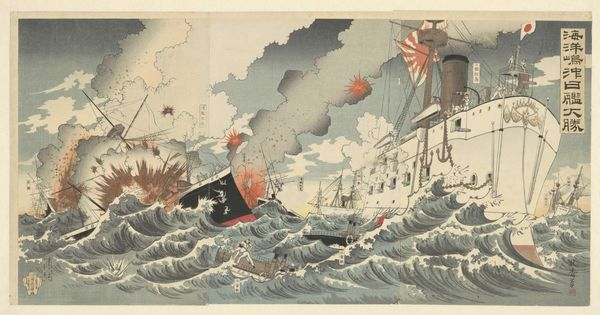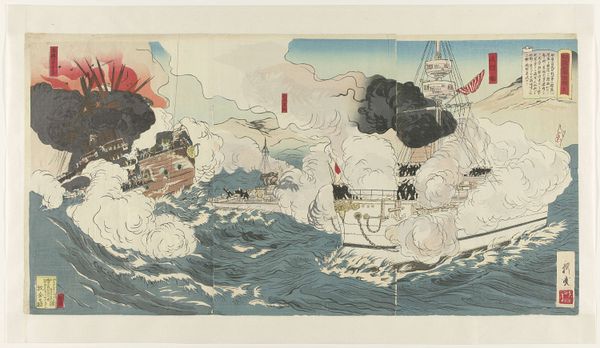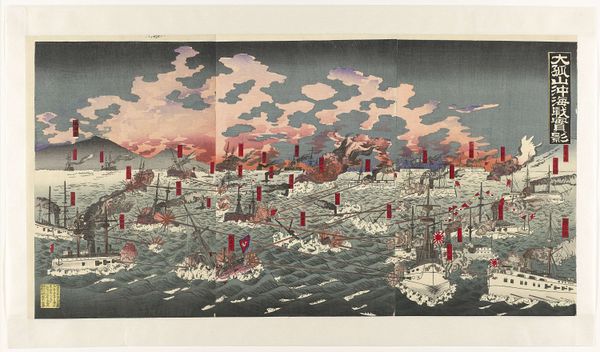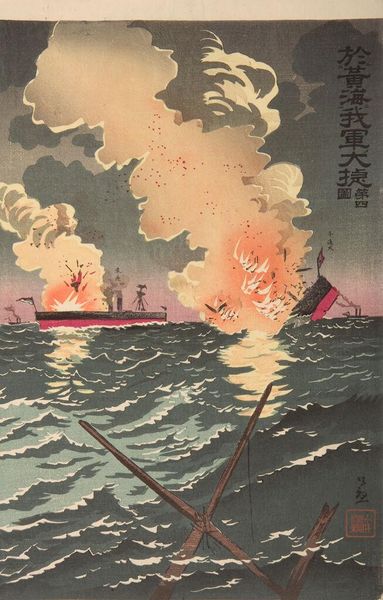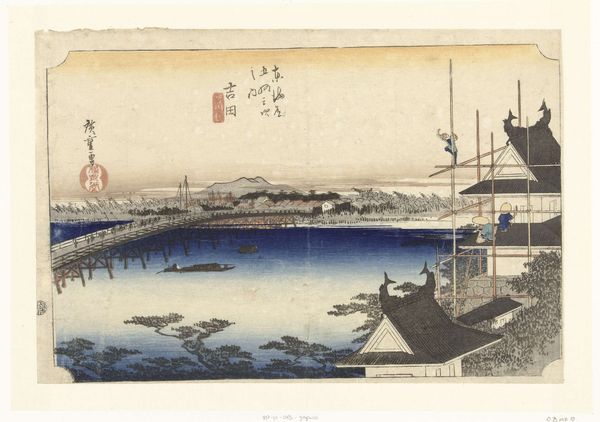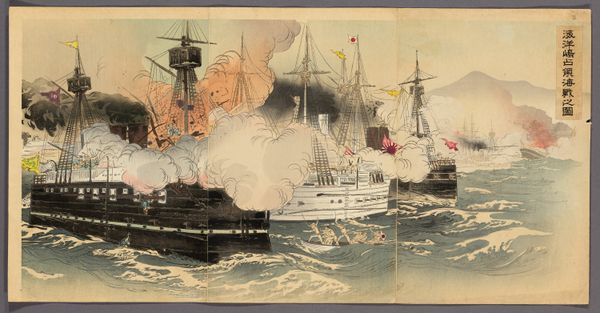
De overwinning van de Japanse marine na een hevige zeeslag nabij Dagushan 1894
0:00
0:00
utagawakokunimasa
Rijksmuseum
Dimensions: height 369 mm, width 711 mm
Copyright: Rijks Museum: Open Domain
Curator: What strikes me immediately is the sheer violence rendered with such…almost innocent looking lines. Look at the ships exploding; it’s all so…clean. Editor: Precisely! This vivid woodblock print by Utagawa Kokunimasa, circa 1894, commemorates "The victory of the Japanese navy after a fierce naval battle near Dagushan" It captures a moment from the First Sino-Japanese War, doesn't it? The representation of naval battles gained importance during this conflict as it aimed to create strong nationalist feelings. Curator: Nationalist feelings through explosions. How ironic. I wonder, how true to life this depiction is? I find it romanticised. Editor: Romanticized yes, but let's also consider it within the context of ukiyo-e, where stylized representation often takes precedence over realism. Consider how it places the "heroes," Japan's naval ships, against the chaotic backdrop of the vanquished enemy vessels, their boats dramatically engulfed in smoke. That visual rhetoric mattered enormously. This print certainly participates in nation building through imagery. Curator: Building a nation on burning ships...well, the composition is dynamic, I’ll give it that! The waves crashing give a sense of movement and energy. And those puffs of smoke! It is also pretty large for a print, about a foot tall. I can’t even imagine doing this level of intricacy, like the waves, with just wooden blocks. Editor: Utagawa and his contemporaries leveraged the woodblock technique to great effect, printing bold, colorful images like these which could circulate widely. They're visually arresting even now, more than a century later. You feel the impact even before you analyze the historical implications. Curator: Exactly! It does give me a chill of war…of power, in a weirdly aesthetically pleasing package. Maybe that’s why this “Japonisme” craze went through the west: a fetish for a packaged form of the aesthetics of conflict? Editor: Perhaps so! Regardless, looking at "The Victory..." reminds us of how art operates within broader power structures—sometimes to celebrate triumph, and always to shape collective memory. Curator: And to give people like me a really good visual buzz with those lovely explosions and crashing waves! It seems there's still so much left to learn here about power, art and memory.
Comments
No comments
Be the first to comment and join the conversation on the ultimate creative platform.
